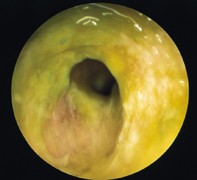Peer Reviewed
Feature Article Ear, nose and throat medicine
The GP’s essential guide to hearing loss
Abstract
The most common causes of hearing loss are benign and readily amenable to treatment, but hearing loss can be a symptom of neoplasia, destructive middle ear disease or progressive otological damage. With a systematic approach, the family doctor can usually determine the most likely aetiology.
Key Points
- Hearing loss affects a child’s speech development and learning, and an adult’s ability to work and interact socially.
- There are two types of hearing loss: conductive and sensorineural. With a systematic approach, the GP can usually determine the type of hearing loss and the most likely cause.
- The cause of conductive hearing loss may best be determined by working inward from the outer ear canal. Unilateral sensorineural hearing loss requires investigation.
- Conductive hearing loss can usually be treated successfully with surgery, and technological advances in hearing aids have improved the outlook for sensorineural hearing loss.
- The earlier a profound sensorineural hearing loss is detected in children, the greater the success of cochlear implantation in achieving hearing and speech development.
Purchase the PDF version of this article
Already a subscriber? Login here.

